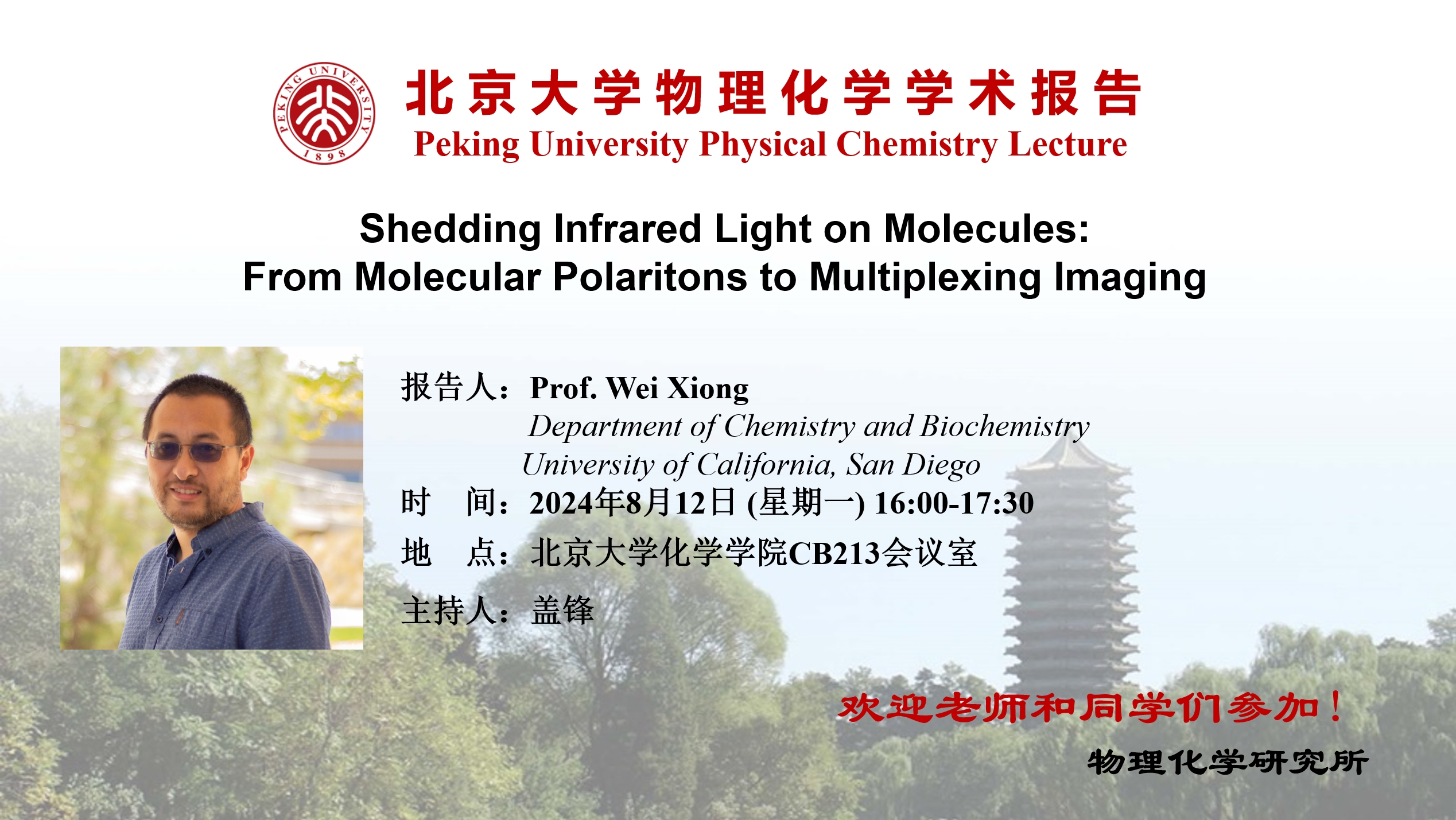
报告摘要:
Mid-Infrared (MIR) light can interact with molecules by selectively exciting molecular vibrational modes. On one hand, MIR can populate molecular species to specific vibrational states to manipulate chemical reactions; on the other hand, IR spectroscopy has long been used as a molecular sensing tool. In this talk, I will discuss recent advancement in my lab concerning both aspects: controlling molecules and molecular imaging.
In the first half of this talk, Prof. Wei Xiong will delve into the dynamics of molecular vibrational polaritons – a hybrid quasiparticle between light and matter through strong coupling interactions.1-4 Using two-dimensional infrared (2D IR) spectroscopy, we have unambiguously demonstrated that polaritons can efficiently promote energy transfer within or between molecules, subsequently slowing down competing reaction pathways. This research sheds light on the potential roles of polaritons in modifying chemical landscapes and influencing reaction pathways. The second half of this talk will discuss the development of a new IR-based imaging technique - MultiDimensional Widefield Infrared-encoded Spontaneous Emission (MD-WISE) microscopy.5 This technique takes advantages of the IR-visible double resonance interactions, which enable using IR photon to modulate fluorescence imaging. As a result, it allows for the distinction of chromophores with overlapping emission spectra by leveraging mid-infrared pulses to encode spatial and temporal data into photoluminescence images. This method shows promises for multiplexing detection channels in biomedical imaging of complex biological entities. These research results highlight how mid-infrared light-matter interaction serves as a powerful mean for both manipulating molecular dynamics and enhancing imaging capabilities, thereby offering new insights into molecular behaviors and interactions at the nano-scale. The implications of these technologies extend across chemistry and biophysics, promising new avenues for research and application in fields ranging from chemical, materials science to biomedical imaging.
报告人简介:
Professor Wei Xiong is a Full Professor and Kent Wilson Faculty Scholar in the Department of Chemistry and Biochemistry at the University of California, San Diego. Wei received his B.S. degree from Peking University, China, in 2006. He then joined Prof. Martin Zanni’s group at the University of Wisconsin, Madison, and completed his Ph.D. degree in 2011. At Madison, Wei focused on developing novel 2D vibrational spectroscopy (transient 2D IR and heterodyne 2D SFG spectroscopy) to study molecules on solid-state material surfaces. Wei then moved to the University of Colorado, Boulder, in 2011, where he worked with Prof. Margaret Murnane and Henry Kapteyn to develop the table-top XUV source for ultrafast measurements and time-resolved photoelectron spectroscopy for nanoparticles. He joined the faculty at the University of California San Diego in 2014. At UCSD, Wei’s research focuses on using and developing ultrafast nonlinear spectroscopic and imaging tools to reveal molecular structures and dynamics of materials, including ultrafast dynamics of polaritonic systems, guest molecule adsorptions in self-assembled materials, femtosecond charge transfer dynamics on organic material interfaces. Wei is a fellow of the American Association of the Advancement of Science, a recipient of Sloan Research Fellow, Coblentz Award, National Brown Investigator Award, and Journal of Physical Chemistry C Lectureship.